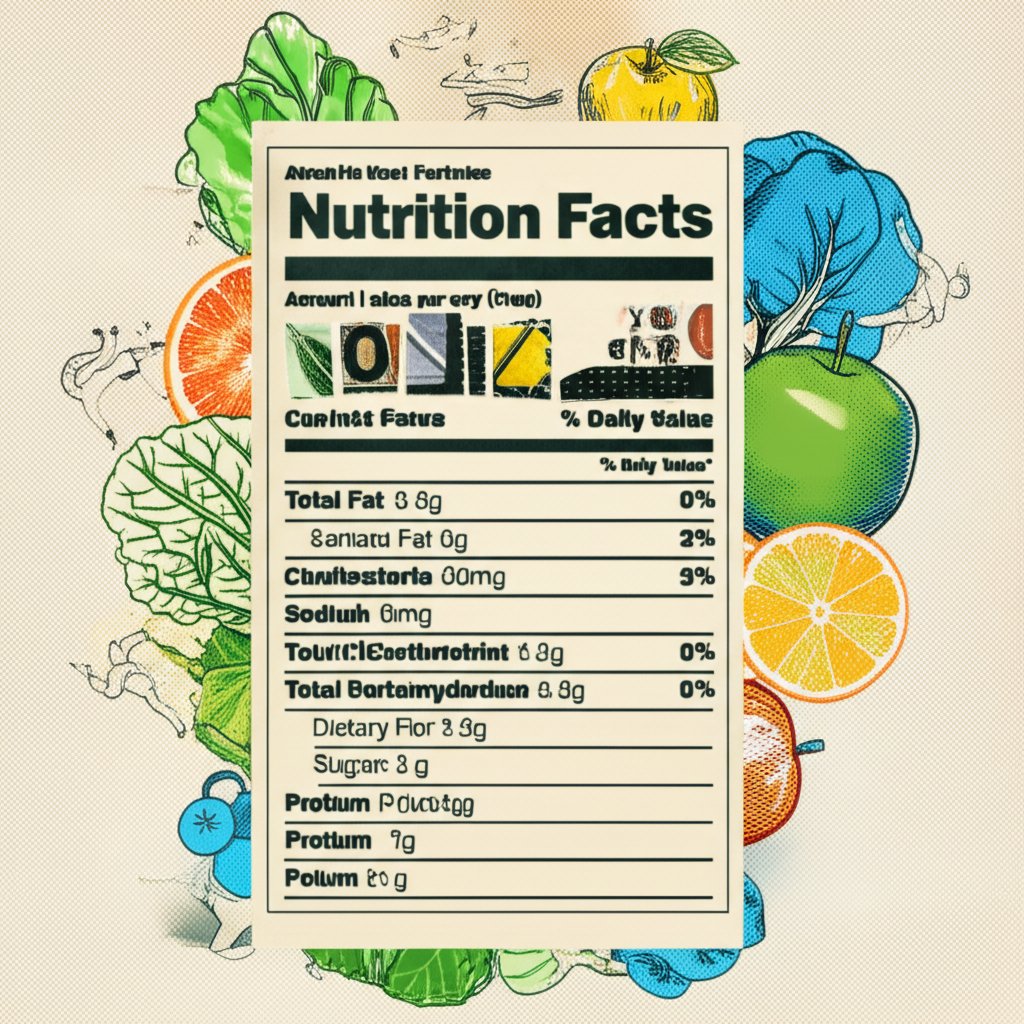Reaching for a refreshing Propel after a workout or just to quench your thirst? You’re not alone. It’s a popular choice, often marketed as a healthier alternative to sugary sports drinks. But before you gulp it down, let’s take a closer look at the propel nutrition facts to understand exactly what you’re putting into your body. This guide will break down the ingredients, vitamins, electrolytes, and other nutritional components to help you make informed decisions about your hydration habits.
At a Glance:
- Propel Water is low in calories (12 per serving) and contains no sugar, making it a popular choice for those watching their intake.
- It’s fortified with vitamins B, C, and E.
- Propel contains electrolytes such as sodium, potassium, and magnesium.
- While it provides hydration, it’s essential to consider the other ingredients and how they fit into your overall diet.
The Rise Of Enhanced Water
In a world saturated with sugary drinks, “enhanced water” like Propel has carved out a significant niche. People are actively seeking low-calorie, flavorful hydration options, and Propel positions itself perfectly to meet this demand. The added vitamins and electrolytes further enhance the appeal, promising more than just simple hydration. But how does the reality stack up against the marketing?
Propel Nutrition Facts: Deconstructing the Label
Let’s dive into the nitty-gritty details of what’s listed on a Propel bottle’s nutrition label. Understanding these figures empowers you to make choices aligned with your health goals.
Calories and Macronutrients: Keeping it Light
One of the primary draws of Propel is its low-calorie content. A single serving (8 fl oz or 1 cup) contains only 12 calories. Here’s the breakdown:
- Total Fat: 0g (0% Daily Value)
- Saturated Fat: 0g (0% Daily Value)
- Trans Fat: 0g
- Cholesterol: 0mg (0% Daily Value)
- Sodium: 79.2mg (3% Daily Value)
- Total Carbohydrate: 2.7g (1% Daily Value)
- Dietary Fiber: 0g (0% Daily Value)
- Total Sugars: 0g
- Protein: 0g (0% Daily Value)
As you can see, Propel is virtually devoid of fat, protein, and sugar. The small number of calories comes from carbohydrates.
Vitamins: A Boost or Just a Gimmick?
Propel boasts added vitamins, specifically vitamins C, B, and E, contributing to its “enhanced” status. But how significant is the vitamin content?
- Vitamin C: 21.1mg (23% Daily Value)
- Vitamin C is an antioxidant that helps support the immune system.
- Niacin (B3): 9.8mg (61% Daily Value)
- Niacin aids in energy metabolism.
These additions can be a small boost, particularly if your diet is lacking in these nutrients, but shouldn’t be considered a substitute for a balanced diet. Remember that individual needs vary, and excessive intake of certain vitamins can have adverse effects.
Electrolytes: Replenishing What You Lose
A key selling point of Propel, especially for active individuals, is its electrolyte content. Electrolytes are minerals that carry an electric charge and are crucial for various bodily functions, including hydration, muscle contraction, and nerve function. When you sweat, you lose electrolytes, which can lead to dehydration, muscle cramps, and fatigue. Propel aims to replenish these lost electrolytes.
- Potassium: 38.4mg (1% Daily Value)
- Sodium: 79.2mg (3% Daily Value)
- Phosphorus: 60mg (5% Daily Value)
While Propel does contain these electrolytes, the amounts are relatively small. For intense workouts or prolonged sweating, you may need a more concentrated electrolyte source.
Other Ingredients: What Else Is In There?
Besides vitamins and electrolytes, Propel contains other ingredients to consider. These often include:
- Citric Acid: Used for flavoring and as a preservative.
- Sucralose and Acesulfame Potassium: Artificial sweeteners used in the zero-sugar varieties.
- Added Colors: Artificial colors to give it the appealing hues.
The presence of artificial sweeteners is a common point of debate. While deemed safe by regulatory agencies, some individuals prefer to avoid them due to potential side effects or personal preferences.
Hydration and Propel: Does It Really Work?
Propel is primarily water (98.9%), making it an effective hydrator. Water is essential for nearly every bodily function, from regulating temperature to transporting nutrients. The added electrolytes can enhance hydration, particularly after exercise or in hot weather. However, plain water is also an excellent hydrator. The key difference lies in the taste and the added electrolytes, which may encourage some people to drink more.
Propel vs. The Competition: How Does It Stack Up?

The beverage aisle is packed with options, from plain water to sugary sodas and sports drinks. How does Propel compare to these alternatives?
- Plain Water: Propel offers the benefit of added electrolytes and vitamins, whereas plain water is, well, just water. Many prefer plain water to avoid the added ingredients in Propel.
- Sugary Sodas: Propel is a far healthier choice than sugary sodas, as it contains zero sugar and significantly fewer calories.
- Traditional Sports Drinks (e.g., Gatorade, Powerade): Traditional sports drinks often contain high levels of sugar. Propel offers a lower-sugar or sugar-free alternative with electrolytes. If you are looking for an alternative to other sugary sports drinks, you might be interested in Swig Drink Nutrition Breakdown.
The best choice depends on your individual needs and preferences. If you’re looking for simple hydration, plain water is ideal. If you want a low-calorie, flavored option with electrolytes, Propel can be a good choice, especially compared to sugary drinks.
Common Questions About Propel Nutrition Facts
Let’s address some frequently asked questions about Propel and its nutritional profile.
Is Propel a healthy choice?
Propel can be a healthier choice than sugary drinks due to its low-calorie and zero-sugar content. The added electrolytes and vitamins offer some benefits. However, it’s important to consider the artificial sweeteners and other additives, especially if you have sensitivities or concerns.
Can I drink Propel every day?
Drinking Propel in moderation is generally safe for most people. However, relying solely on Propel for hydration may not be the best approach. A balanced intake of plain water and other healthy beverages is recommended.
Is Propel good for weight loss?
Propel’s low-calorie and zero-sugar content can make it a suitable beverage choice for those trying to lose weight, especially as a replacement for sugary drinks. However, weight loss ultimately depends on overall calorie intake and expenditure.
Does Propel contain caffeine?
No, Propel does not contain caffeine.
Making Informed Choices: Propel and Your Overall Diet
Understanding the propel nutrition facts is just one piece of the puzzle. To make truly informed choices, consider how Propel fits into your overall diet and lifestyle.
- Assess Your Hydration Needs: Are you adequately hydrated throughout the day? Propel can be part of a hydration strategy.
- Evaluate Your Electrolyte Needs: Do you engage in intense physical activity or sweat heavily? If so, Propel may help replenish lost electrolytes.
- Consider Your Sweetener Preferences: Are you comfortable with artificial sweeteners? If not, explore other low-sugar hydration options.
- Read the Label: Always check the ingredient list to be aware of any potential allergens or ingredients you wish to avoid.
Beyond the Bottle: A Holistic Approach to Hydration
While Propel can be a convenient and refreshing option, it’s essential to remember that optimal hydration extends beyond a single beverage choice. Focus on:
- Drinking Water Regularly: Aim for at least eight glasses of water per day, and adjust based on your activity level and climate.
- Eating Hydrating Foods: Many fruits and vegetables, such as watermelon, cucumber, and spinach, have high water content.
- Listening to Your Body: Pay attention to thirst cues and drink when you feel thirsty.
- Balancing Electrolytes: Ensure you’re getting enough electrolytes from a variety of sources, including food and beverages.
Propel Nutrition Facts: A Final Sip of Knowledge
Propel offers a low-calorie, flavored hydration option with added vitamins and electrolytes. Understanding the propel nutrition facts allows you to make informed decisions about its role in your diet. While it can be a healthier alternative to sugary drinks, it’s important to consider the other ingredients and how it fits into your overall hydration strategy. By combining this knowledge with mindful hydration practices, you can optimize your health and well-being.
- Weight Loss for Men Builds Habits for Lasting Success - October 27, 2025
- How To Lose 50 Pounds In 6 Months The Right Way - October 26, 2025
- Lose 50 Pounds in Six Months Healthily and Realistically - October 25, 2025










